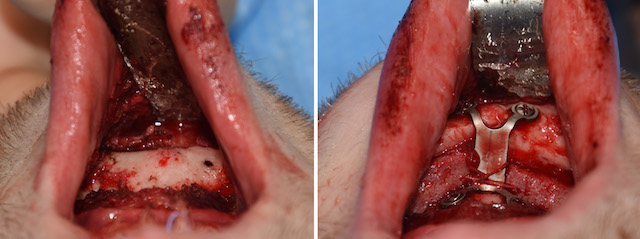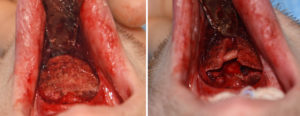Background: Chin augmentations are successful performed by standard implants in the vast majority of patients. This is due to the moderate nature of most chin deficiencies which are in the range of 3 to 7mms for sufficient aesthetic improvement. The concept of standard sizes of available implants is to address the range of aesthetic deformities that fall within what most people would have.
But when chin deficiencies approach 10mms or more, the concept of using anything standard becomes more problematic. When such chin deficiencies occur this also indicates that the entire lower jaw is short. This introduces other variables such as the angulation of the front of the chin bone, the tightness of the soft tissue chin pad and the impact of the shorter neck beneath the chin. Besides creating a large implant load putting pressure on the front of the chin bone, this reaches the limits of what standard size chin implants that are available.
Many times in patients with really short chins they present as having an existing indwelling implant. While the initial chin implant placement has provided aesthetic improvement, they subsequently realized that they desire more augmentation. Having an indwelling implant and knowing how much horizontal improvement it has provided is really help in determining how much more that they would desire.
Case Study: This young male had a history of a two-piece Medpor chin implant placed from a submental incision. While he was initially happy with the 7mms horizontal projection he came to realize he needed much more. By preoperative measurements based on a line dropped down from his lower lip as well as computer imaging, he felt that an additional 5 to 7mms of horizontal projection was needed. Since no standard chin implant provides 12mms or more projection he opted for a sliding genioplasty replacement.
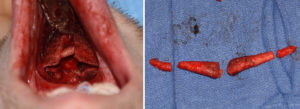
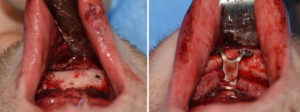
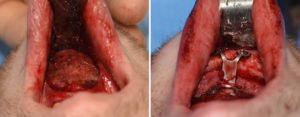
There is nothing inherently wrong with placing a smaller chin implant than may be needed, particularly when one may be uncertain as to how much augmentation one really can accept. It is also safer to place more average implant sizes given the shape of the bone and the tightness of the soft tissue chin pad. But whenlarger chin augmentation is needed the options are either a custom chin implant or a sliding genioplasty…or in rare cases a combination of both.
Case Highlights:
1) Patients may desire more horizontal projection than standard chin implants can provide.
2) Often the desire for the ideal aesthetic chin augmentation is not apparent until one has had an initial chin implant.
3) In chin augmentation that exceed 10 mms a sliding genioplasty may be needed.
Dr. Barry Eppley
Indianapolis, Indiana

